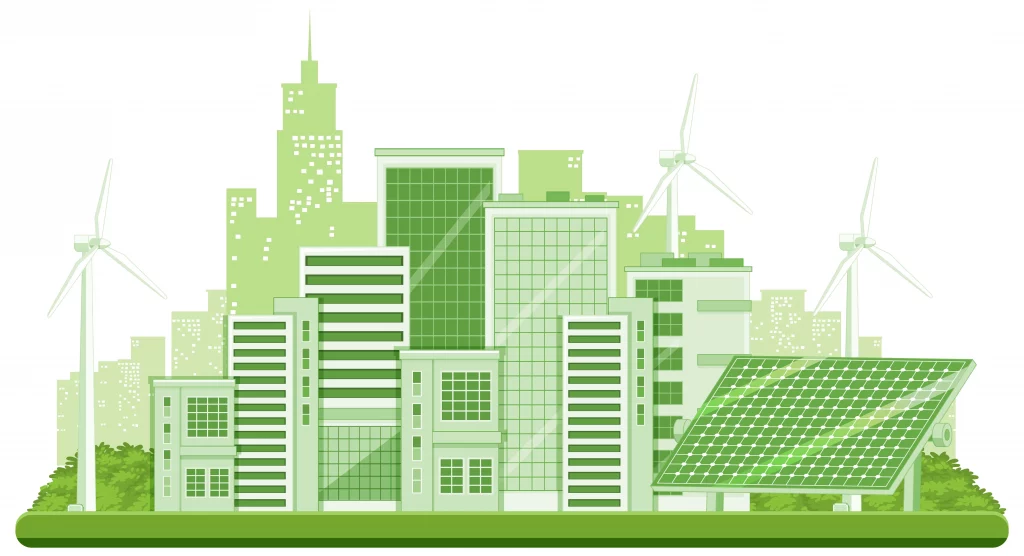In the realm of construction and infrastructure development, one element stands tall as the backbone of most structures: cement. Cement, however, carries a significant environmental burden, being responsible for a substantial portion of global carbon dioxide (CO2) emissions. Fortunately, as our world grows more conscious of its environmental footprint, we’re witnessing the emergence of green cement, a sustainable alternative that’s changing the landscape of construction for the better. This article will explore green cement in detail, its profound benefits, and how it’s leading the way towards a more sustainable future.
Understanding the Environmental Impact of Conventional Cement
To appreciate the significance of green cement, we first need to grasp the environmental issues associated with traditional cement production. Conventional cement relies heavily on limestone, which is heated to high temperatures in a kiln, resulting in the release of vast quantities of CO2 into the atmosphere. This process also consumes substantial amounts of energy and depletes natural resources, making it a major contributor to global warming and environmental degradation.
What is Green Cement?
Green cement, also known as sustainable or eco-friendly cement, represents a transformative approach to cement production that aims to minimize its ecological impact. It encompasses various technologies and alternative materials to reduce CO2 emissions, energy consumption, and the depletion of natural resources associated with conventional cement manufacturing.
Varieties of Green Cement
- Geopolymer Cement: Geopolymer cement is produced by reacting industrial waste materials, such as fly ash and slag, with an alkali activator. This process generates minimal to no CO2 emissions and utilizes recycled materials, making it a sustainable alternative to traditional cement.
- Calcium Sulfoaluminate Cement (CSA): CSA cement is manufactured at lower temperatures compared to ordinary Portland cement (OPC), which results in reduced energy consumption. Additionally, it emits fewer greenhouse gases during production and offers rapid strength development, a notable advantage in construction projects.
- Alternative Binders: Researchers are continuously exploring alternative binders like magnesium oxide, which have the potential to replace Portland cement in certain applications. These materials have lower environmental impacts and show promising results in terms of strength and durability.
The Benefits of Green Cement
- Reduced CO2 Emissions: Green cement technologies substantially lower CO2 emissions during production, positioning it as a more environmentally friendly choice. For instance, geopolymer cement can reduce CO2 emissions by up to 90% when compared to traditional cement.
- Energy Efficiency: Many green cement production methods require less energy compared to conventional cement manufacturing, further diminishing their carbon footprint.
- Recycled Materials: Green cement often incorporates industrial waste materials like fly ash, slag, and recycled concrete aggregates. This reduces the demand for virgin resources and decreases landfill waste.
- Improved Durability: Certain green cement formulations exhibit enhanced durability, potentially leading to longer-lasting structures and reduced maintenance costs.
- Innovative Applications: Green cement finds applications beyond conventional construction, including novel uses like 3D printing and sustainable housing solutions.
Challenges and Future Prospects
While green cement holds immense promise, it is not without its challenges. These challenges encompass the need for more extensive research and development, scalability in production, and gaining acceptance within the construction industry. However, as environmental concerns continue to gain traction, the demand for sustainable construction materials is expected to fuel innovation and investment in green cement technologies.
Green Cement in Action
Numerous real-world applications showcase the potential of green cement in revolutionizing the construction industry.
- Infrastructure Development: Green cement is increasingly being employed in large-scale infrastructure projects, such as bridges, roads, and tunnels. By utilizing eco-friendly cement, these projects can significantly reduce their carbon footprint and contribute to a more sustainable future.
- Sustainable Housing: The construction of eco-friendly homes is on the rise, with green cement playing a pivotal role. These homes often incorporate sustainable building materials, including green cement, to minimize their environmental impact.
- Urban Planning: Green cement is integral to urban planning and development, enabling the construction of sustainable cities. Its reduced CO2 emissions and energy efficiency are key factors in creating environmentally friendly urban environments.
- Renewable Energy Infrastructure: The construction of wind turbines, solar panels, and other renewable energy infrastructure relies on sustainable building materials, with green cement being a prime choice due to its lower environmental impact.
Green cement is more than a buzzword; it signifies a monumental shift in the construction industry toward a more sustainable and environmentally responsible future. By significantly reducing CO2 emissions, conserving energy, and incorporating recycled materials, green cement stands as a formidable force in mitigating the environmental impact of the built environment. As we continue to explore and embrace these innovative solutions, we draw closer to building a greener, more sustainable world for generations to come. The era of green cement is upon us, and it promises a brighter, more sustainable future for construction and our planet.



